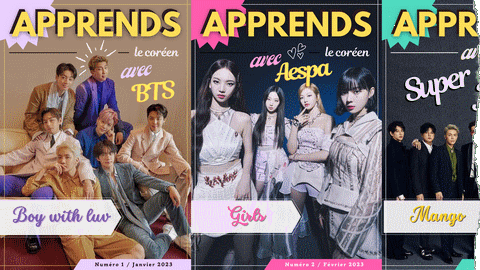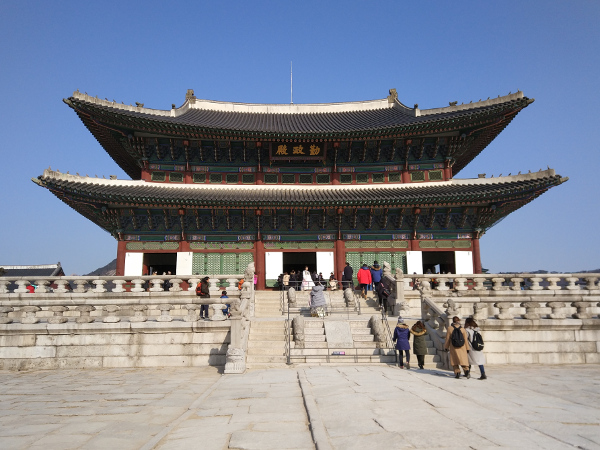Cours de coréen ᚛ Level 2 - Korean for Beginners #1 (Lessons 31 to 60) ᚛ Leçon 38 - The Progressive Tense in Korean – Be + -ing
The Progressive Tense in Korean – Be + -ing
The progressive tense
In Korean, to indicate that one is / was / will be in the middle of doing something, we follow the following form:
[Stem]고 있다
- 먹다 → 먹고 있다 (= to be eating)
- 읽다 → 읽고 있다 (= to be reading)
- 하다 → 하고 있다 (= to be doing)
The new verb with -고 있다 that is created can be conjugated to all of the possible forms of conjugation.
현경이는 공부하고 있어요.
→ Hyeongyeong is studying.
그때 전화하고 있었어요.
→ At that moment I was calling.
지금 밥 먹고 있어.
→ I am eating (a meal) right now.
강아지가 잠을 자고 있습니다.
→ The puppy is sleeping.
그때는 아빠가 부대찌개를 요리하고 있을 거야.
→ At that time, Dad will be cooking budae-jjigae.
누나는 고양이 사진을 찍고 있었어.
→ My older sister was taking pictures of the cat.
그녀는 이미 알고 있었어.
→ She already knew it.
Negation of the progressive tense
En savoir +
Summary table of structure
En savoir +
Exercises
En savoir +
Apprends le coréen avec la K-pop est un ensemble de 4 numéros qui permettent d'apprendre de nombreux points de la langue coréenne en se basant sur des chansons coréennes récentes. Pourquoi apprendre le coréen avec des chansons ?
- Pour apprendre du vocabulaire et des expressions dans l'air du temps, utiles dans la vie quotidienne
- Pour pouvoir travailler la prononciation du coréen à l'aide de la chanson étudiée
- Pour voir ou revoir de nombreux points de grammaire disséminés dans les couplets
- Pour s'amuser tout en apprenant des choses, car quoi de plus ludique que nos chansons préférées ?


